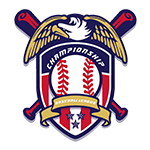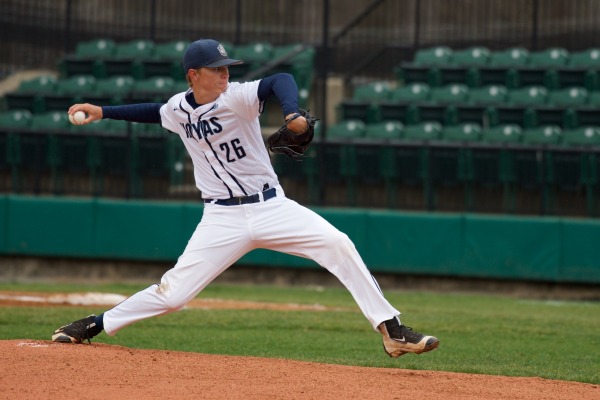2033 CBA Mock Draft 2.0
It’s been a while since I’ve gotten around to write an article here. Between working on the International Amateur tracker and the Hall of Fame (RIP 2032 class), most of my time has been spent on upcoming articles I hope to push out (Including a new 10 for 10 for 10). To take a break (and to write on something I know can get done quick), here is another mock draft before the first pick goes down.

1. Efrain Vargas, SP, Rice
A no brainer choice here, Vargas is the best combination of CBA readiness and pure talent since Chad Armbruster. About the closest to a surefire ace there is, Vargas makes for an easy selection. He does, however, have big shoes to fill – the last time a pitcher went first overall was Latrell Edwards, who is putting up his third great season in a row.

2. Jonathan Lampkin, SP, Laredo College
I would have, in this situation, picked the Roar to go with the biggest power hitter nine times out of ten. Their middle infield, consisting of Tony Zamarippa and Charles Bailey looks to provide the boom – but there’s no true big threat in the lineup, which makes this pick the perfect spot to go after somebody like that before they lose the chance to pick a game changing DH type hitter.
This draft, however, lacks that guy in this high of a spot. Lampkin is the best remaining starter and, by process of elimination, all of the top hitters don’t make sense for the Roar to pick up here. Rey Vasquez would be the DH hitter to pick – however, he’s not worth the second overall spot.

3. Ryan Kraus, CF, Connor State
I could easily see the Pandas trading down from here to 12-ish, which has been rumored to be especially murky with San Diego, LA, and DC all jostling for position around that. In a no trade mock, however, the Pandas have to make a selection here – which ends up as Ryan Kraus. When combining Kraus with Jorge Favela, you get an elite defensive shorstop with an elite defensive center fielder, which allows the Pandas to go back to the extreme pitcher park they once had. And yes, we checked – there are no solid teenagers that we think could sneak in here (maybe, maybe Brad Hawks could slide in here – but he would still probably be there if they were to trade down).

4. Bruce Gipson, SP, Arizona
Brooklyn needs… well, everything. It’s simplest, then, to go with the best player available – which, in this case, is Gipson. He would have been the favorite to go second to the Roar had it not been for the arm injury – instead, Brooklyn can afford to wait the injury out to get a true rotation header. If Gipson doesn’t suffer any setbacks, he’s a safer bet than Vargas to finish developing – he’s already farther along in his development than Vargas, according to multiple scouts, and looked ready to contribute from the day he was drafted.
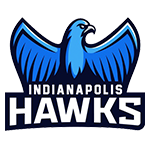
5. Sonny Berg, CF, Louisville
Berg, a former favorite to go first overall, slides to the Hawks at fifth – and they couldn’t be happier. Although Berg doesn’t display any premier tools, he does everything above average – which, for a team that desparately needs outfield help, will do plenty.
This is where the draft becomes very difficult to predict – Indy is at a very interesting spot right now. They’re competing in a year where they shouldn’t be competing, they’re going to be stacked in the middle of the lineup for a long time – take Farrington, Medley, Pressler, and Sam Greene joining them from Austin at the end of the year – but they will also run into a log jam at first/third/DH, with all four filling in for those three spots. We could see one of them used as trade bait, or have Greene slide over to second base (where he would be far below league average, but that bat has to slide in somewhere). They’re also getting Zachary Wallace back at the end of the year, which gives them a solid 1-2 combo at the top of the rotation – which leaves us with two options:
First, take Berg as both the safest and best player available, filling in a big hole in the lineup and fielding (as there is nobody in the outfield in the Hawks’ system).
Second, take a badly needed starter behind a struggling Wallace (who has been demoted to Round Rock after two seasons of an ERA higher than six) and Josh Clark (who is struggling in his own right to fill out his potential).
Ultimately, Berg seems like the better player to grab here than a Chris Zuniga, Ryan Hooker, or Steve Green, which is why Berg goes fifth.

6. Rey Vasquez, OF, Vanderbilt
Salt Lake City is not in need of pitchers this draft – they have three future studs in Danny Horsey, James Kramer, and Dana Lane. What they do need, however, are more big bats to play in the small park that is “Snapper Stadium by Best Buy” (Just give up on having your team name in the stadium at this point – either call it “Best Buy Stadium” or drop the sponsorship). Vasquez will hit the ball out of the park often as well as provide a decent left field to complement last year’s first round pick Sam Lynch. The only thing the Snappers will need in the outfield after this is a center fielder – which can be had in the second round, judging from previous drafts. Infield can also wait until next year – there’s no reason to break open the bank on any of the third basemen available, especially with the emergence of Ricky Rodriguez and the addition of Benjamin Kramer.
Edit: After writing this the deal between SLC and Boston went down. SLC sent James Kramer away to Boston, opening up a spot in the rotation – however, this still does not tip the scales toward a starter in this spot. The newly acquired Lorenzo Galvez will shore up an infield spot, which still leaves the outfield wide open.

7. Steve Green, SP, Connor State
The difficult thing to judge with Seattle is what they need – because they have a revolving door of needs, only being filled by one or two first round picks every year – and, when it takes 25 men to fill a roster, that’s not going to cut it. They hit on Robby Santana in the expansion draft, have Ryan Bauer exceeding expectations and on pace to become one of the league’s best hitters, Aaron Biviano as a nice piece in the back of the pen – but still need a lot of pieces to make a dent in any way. Green provides a much, much needed starter who both has the highest upside and is the safest bet amongst starters at this stage.

8. Adam Simpson, 3B, South Carolina
“But Andy Arnett is still out there and he makes perfect sense since Portland needs time to stock up high picks and Arnett is only 17 and Arnett has the highest ceiling left among hitters and Arnett just makes too much sense here”
Yes, but Portland also picked Will McAvoy third overall last year – who also plays second base.
Adam Simpson becomes the best player available, and Portland takes the opportunity to add to their infield. A starter could make sense here but starters have a limited shelf life as compared to hitters in the league – while a pitcher could make sense here, there’s also a chance the starter will fizzle out before Portland can get enough around them to make a difference (See Chris Anderson). If they do go with a starter, expect Sam Carlin or Brad Hawks to go off the board.

9. Ryan Hooker, SP, Houston
Carolina is winning this year. They have one of the best bullpens in the SL, a solid lineup, and young contributors that will carry the club in the PL (should they make it). The one spot that is lacking, however, is the starting pitching – once thought to be the future strength of the team, the starting depth is no where to be seen.
Let’s do a quick intermission here where we create a play in the kitchen, starring a box of pasta and a boiling pot of water.
We have a nice box of pasta (spaghetti, let’s call it), and the cook is ready to put it into the pot. There are three nice pieces of spaghetti (the kind that are home made), along with a bunch of other pasta pieces (Like a Walmart box) that can contribute to a nice dinner.
Before we can even see the full potential of one of the home made pasta pieces, it shatters into a million pieces. Oh well, the chef thinks, I still have a full box and two more home made pasta pieces.
Once the chef puts them into the pot, the spaghetti starts cooking. He takes out one of the pasta pieces, and, seeing that it is cooked decently, decides to take out most of the remaining Walmart brand noodles but leaves one more home made piece in the pot for an extra minute, hoping to cook it just right.
By the time he takes the last piece out of the pot, it is dry and crunchy.
So what is the point of that? Nothing really. Just that piece one is Alberto Cruz, piece two is Eric Watson, and piece three is Chris Anderson.
So yes, they need a starter. And Hooker is the most complete package ready for competition next year.
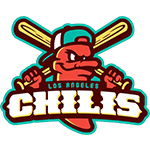
10. Chris Severance, CL, Houston
LA doesn’t necessarily need much more – sure, they could use better pieces in spots, but there’s no glaring hole in the future roster – but the back end bullpen doesn’t have the lock down guy they’re probably hoping for. With starting pitching filled up for now, Severance makes the most sense here – a guy who, within a season, can step in as an instant stopper, pitch multiple innings, and has one of the highest ground ball rates in the draft for a team that needs to keep the ball on the ground in a small park. They could go starter here, but the starters that match their mold are too young to make an impact on this roster phase.

11. Bobby McCullough, C, Eastern Oklahoma State
Here’s where picks start to get interesting – DC, according to OSA, just needs one thing from this draft.
Time.
Starting pitching depth is very good, bullpen of the future is deadly, outfield needs some work but has two young guys, infield needs some work but is also very young… let’s see who’s at catcher.
Wow.
Oh wow.
The best catcher in the system, if here were to fully develop, relative to the PL is… 25 overall.
What is really a pick out of necessity than a pick out of the future (or, for the matter, a pick based on where we’re at in the draft), McCullough is the best catcher in the draft. While he might not be worth the 11th overall pick, DC desparately needs a catcher here – and McCullough is the answer.

12. Brad Hawks, SP, Boston Beacons (BR-16)
With San Diego just starting a rebuild, it seems very likely they’ll go young with this pick. If prior draft history tells us anything, they don’t mind taking pitchers with their high picks – which likely means they’ll follow up last year’s high risk, high reward starter with another high risk, high reward starter. If Hawks develops, him and Brian Francis will go on to be one of the scariest 1-2 combinations in a long time, combining with Sean Norton for a beastly rotation. However, just like Francis, Hawks still has a long way to develop – which could lead to dark times in San Diego once again if neither reach their potential.

13. Andy Arnett, 2B, Los Angeles Legion (BR-16)
With the black hole that is the catcher position taken care of, DC can refocus their efforts on refilling a depleted lineup after the exodus of demotion opt outs. Arnett is the same age as Alex Gonzalez, a top IAFA signee, both of whom will probably make it to the big leagues by the time Adam Renella is due for his first big contract. Arnett and Gonzalez, both 17, slide in with a nice core group of 16-18 year old pitchers in starters Joe Mindel and Bobby Dietz, along with relievers Justin Temoney, Jasper Manson, Alejandro Ronda, and Tony Evans. Expect DC to flounder for the next three to four years but come back with a vengeance – should everything go to plan.
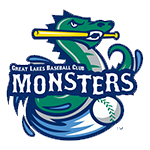
14. Aaron Hannah, 3B, Cochise College
Pitching is not a problem for Great Lakes at this point – they have one of the deepest pitching sets in the association, both with their starters and relief corps. For a team that has had success elude them like a perpetual game of hide and go seek, the team is not weak in many spots. Ultimately, shortstop is the position that is the most in need of an upgrade here. The one problem with that position this draft, however, is that this draft is by far the weakest shortstop draft in the history of the league. Aaron Hannah is the best remaining infielder and also checks off the third base box that the Monsters will need in the future.

15. Cody Robbins, RF, Harrisburg Lizard Kings (BR-16)
Bay Area, again, goes with the best player available here. Robbins profiles as a future all star caliber player with a great bat and potentially above-average defense. At 17, Robbins still has a ways to develop – Bay Area, however, is known to be patient with these kind of players, so Robbins makes perfect sense to head to San Fran. We could also see the Pandas going with a starter here, but Robbins is just plain better than the starters left.
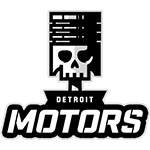
16. Sam Carlin, SP, Boston Beacons (BR-16)
Detroit is surprisingly stacked and ready to compete for the next five years, although it did take a bit of luck (Morrett and Patoine developing changes probably saved the team from demotion). Detroit could go one of two ways with this pick:
First, realize that your infield is soon going to have depth problems. Nadal is getting up there in age and, with the way aging works in this league, nobody knows how much longer he’s going to stay at the top of his game. Your top infield prospects (Mario Chevez, Alfonso Alvarez, and Sidney Webb) all profile as first basemen. Paul Rudin is the only PL high level infielder who still has years to contribute at a position other than first base.
or, knowing Detroit, they’ll go with the 16 year old starter. When given the choice between improving the club now and improving the club in the future, Detroit almost always goes the future route – and, more often than not, those picks work (Looking at you, Sidney Webb). So, while Dave Gerber makes the most sense in this spot, Sam Carlin would be our best guess.
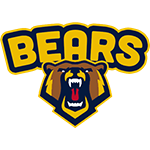
17. Dave Gerber, 2B, Eastern Oklahoma State
Sacramento is just beginning the process of what looks to be a long, painful rebuild. They don’t have much on the roster anymore, but have needs in one spot specifically – the lineup. While their pitching does need help, there are enough pieces there to warrant them not selecting a pitcher this time around. Dave Gerber can be paired with last year’s first round selection Roman Mendez to form the middle infield that will carry the Golden Bears through the rebuilding phase. The starters left didn’t present enough of an upgrade over what Sacramento already has to warrant them passing on Gerber, where the only prospect they have for the lineup is Mendez.

18. Jerry Simpkons, SP, Cal State Fullerton
Midwest is dealing with a very old team here – most of their big name guys are older than 30 – and they need an injection of youth. While all their spots need attention, the rotation is going to have the most red flags of any spot. With Mike Evans, Sean Erickson, and Paul Dale all 29 or older, and not many other names behind it, Simpkons provides the Plainsmen with a starter who they can build around. Knowing that once every five days you have a solid chance to win should leave the Midwest fans feeling much better.

19. Brian Dugas, CF, Boston Beacons (BR-16)
Oklahoma’s starters are still young and don’t necessarily need an upgrade this year. Miguel Hernandez is the ace that Oklahoma needs, and the very deep bullpen doesn’t need help either. What Oklahoma does need, however, is an outfielder with high upside. Xiao-gang Yo provides a solid center field option but doesn’t have much higher upside than a regular starter. The same could be said for Tony Henry and Mel Rodriguez – both solid options but not much more than everyday starters. Dugas, while young, will provide the building block that Oklahoma can build off of for their next wave of prospects. He projects to be a top tier leadoff hitter while providing Diamond Defender quality defense in center, with very good speed as well – just what Oklahoma needs to continue the team philosophy of building on pitching.

20. Ian Blatner, CL, LSU
Yes, I know I said that Portland needs to go young this draft earlier in the mock – but after selecting Adam Simpson, why not double down on the college players? Blatner is easily the best player left, and gives Portland the stopper they’ll need to get to the next level.

21. Joe Buchanon, LF, Arkansas
Atlanta has a nice core of young pitchers they’ll be relying on to develop if the next wave of prospects is to be successful. Both the starters and the relievers have three main guys under 22 that Atlanta will hope to carry them to the next level, which leaves the lineup to work on. Now, the void that is the Atlanta outfield shines (or, should I say, darkens). They have top prospect Marvin Bazan in center field, potentially an MVP caliber player in center for a decade. Their next best outfielder is 34 year old Jose Sanchez, clocking in at 45 overall relative to the PL. Buchanon, while he has limited upside, presents a ready to go option in the outfield that Atlanta can plug in and have one less spot to worry about for the next 6+ years.

22. Kevin Burki, SP, Oregon
The best starter left on the board, Burki is also the most developed starter and is nearly guaranteed to make a major league impact. Adding Burki would give Portland their third baseman, SP1, and stopper of the future in one draft – not bad for one days’ work.
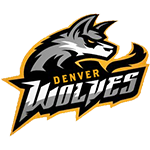
23. Bruce Adams, 1B, Rice
Bruce Adams presents himself as the front runner here by a matter of two facts: First, Denver needs infielders. While Adams doesn’t provide a great first base, he’ll be good enough over at the bag to not cost the Wolves too often. Second, in the thin air, Adams is the best hitter left at launching balls over the wall, perfect for a team that has Dave Kruger and Sergio Carrenas all by themselves in the lineup. Josh Verburg would be a great influence on Adams, who would anchor the middle of the lineup for a long time. Adams also is mostly developed, leaving little to chance – perfect for a team that finds itself on the discussion for demotion season by season.

24. Sebastian Williams, SP, Dallas Dodgers (BR-16)
Bay Area, having yet to take a pitcher, decides to roll with Williams here at 24th overall. He’s young, at 17, which fits the bill for the Pandas’ players. He has incredible potential but also needs to develop. It’ll be a while before Williams hits the majors but, if the Pandas poor enough time and effort into him, Williams has the chance to lead the Pandas’ rotation.

25. Jason Lewin, SP, LSU
After taking Hawks, San Diego looks to add a safer route to the rotation. Lewin presents the perfect solution of a guy who is almost fully developed and is a decent starter who could fill in a third spot in the PL. Of the remaining players, Lewin is the best one left – and how could you pass up adding two good starters to your rotation?

26. Bobby Hernandez, 3B, San Diego Rhinos (BR-16)
Cincy is fairly set in the rotation, has a solid bullpen coming up, and has the second best outfield in the league. All those guys are young and don’t need to be replaced any time soon. The one spot that does need help, however, is the infield – which Hernandez can fill in the future. As the best infielder available, Hernandez will have time to develop and eventually replace Chase Gumbrecht or another fill in infielder.

27. Corey Stoll, RF, Florida
The Florida graduate stays “home” and remains in the Florida system. While Florida may need rotation help in the future, they need outfield help now – starting two below average players. Stoll will be able to develop quickly and provide the bat they need in the outfield, replacing Limberger or Ceccacci while allowing prospect Reinhardt Meyers to fill in at center.

28. Bill Silverman, SP, Virginia
DC has a long history selecting starters and relievers with their high picks – take the last three years, for example. In the first three rounds, nine out of their twelve top selections – 75% – have been starters or relievers. Silverman is the best remaining pitcher in the draft, allowing DC to farther build what is quickly becoming a very good and very young rotation.

29. Joe Bennett, CL, Oregon
Houston is slowly filling out their roster after the trades that netted them Tony Sipe and Latrell Edwards. The two young rotation pieces are looking to add to the Houston team that has been out of the BL for two seasons. Out of the remaining spots left on the team, a good reliever is the one piece missing. Bennett, although fragile, is the best reliever available and makes sense for a Houston team that is currently competing for promotion.
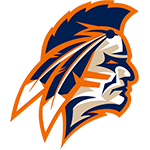
30. Garrett McGinnis, CL, UCLA
Miami doesn’t need any pieces – just what would finish out their roster. They’ve been hit hard by the injury bug on the pitching side, and with their main bullpen pieces getting old, McGinnis makes the most sense for Miami in this spot. McGinnis will add to the pen that features a few high quality relievers, and will stay relevant even as the vast majority of their bullpen is over 30.
